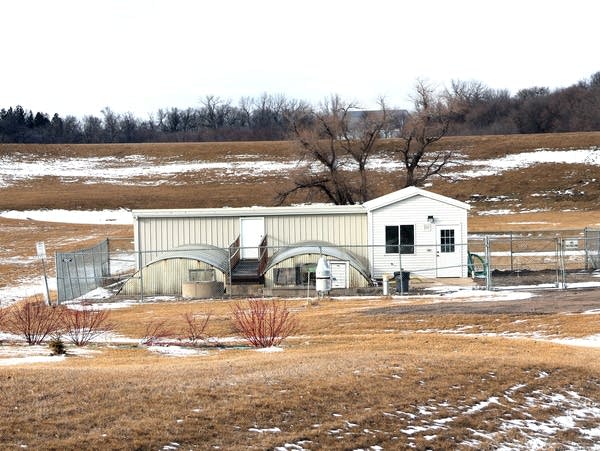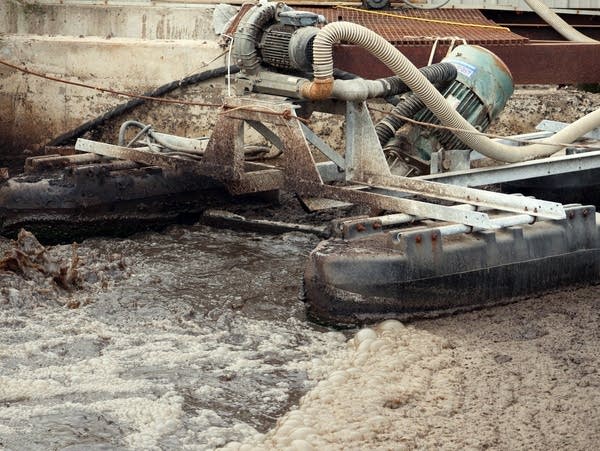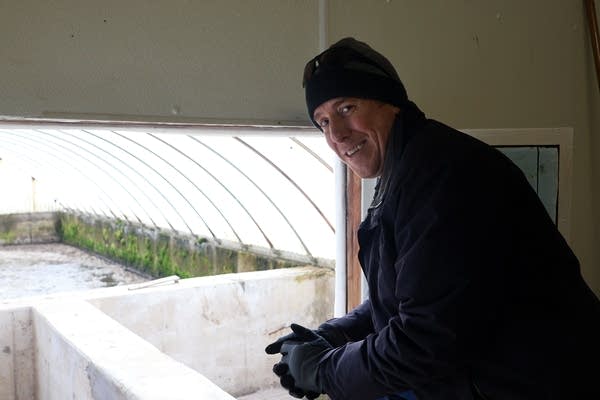
Amazon says it is removing Just Walk Out technology from its Fresh grocery stores
April 3, 2024
Here Are the Twin Cities’ 2024 James Beard Finalists
April 3, 2024The small wastewater treatment plant on the edge of Halstad uses bacteria to treat wastewater flowing from the town of 600 residents.
Those bacteria need oxygen to survive, so a floating pump injects air into the dirty water in a 50,000 gallon covered concrete tank.
When a consultant suggested cutting off the oxygen to those tiny bugs would help remove phosphorus from the wastewater, Halstad utility manager Lucas Spaeth was skeptical.
“And to say, ‘Okay, we’re going to drop our dissolved oxygen to zero.’ Well, our our bugs aren’t going to survive,” Spaeth recalls.
But he agreed to try the idea of switching off the air pump on a cycle to raise and lower the oxygen level in the wastewater.
“And then we’re adding an anaerobic bug, that will actually attract to the phosphorus and take that in,” said Spaeth.
Anaerobic bacteria flourish in low oxygen water. By fluctuating the oxygen levels, both types of bacteria are kept active. The result has a been a nearly 70 percent reduction in phosphorus flowing out of this tiny waste treatment plant, according to the International Joint Commission, which funded the project.
The changes also brought an unexpected reduction in nitrogen, said Spaeth.
When the Red River flows north into Canada, it carries with it excess nutrients that contribute to massive algae blooms on Lake Winnipeg, an important fishery and recreation lake in Manitoba.
Those nutrients come from many sources, including human waste, cleaning products and fertilizer runoff from farm fields.
The International Joint Commission which is tasked with working on U.S.-Canadian border water issues, proposed target levels for phosphorus and nitrogen in 2019. They are not enforceable, but are important, according to IJC commissioner Rob Sisson.
“People really didn’t have that goal to shoot for, or an understanding of where we needed to get to,” said Sisson. “So I think that helps us collectively plan and work towards reducing the nutrients discharged into the river.”
In Halstad, there were no expensive upgrades to the plant built in the 1960s, just some timers for the pump and new water testing equipment, paid for by a $20,000 IJC grant.

Halstad city staff invested a few hours a week to fine tune the process and make sure the waste treatment system worked properly while it was being modified.
“So at the end of the day, for that $20,000, we eliminated somewhere around 250 pounds of phosphorus every year from going into the river,” said Ted Preister, executive director of the Red River Basin Commission, who helped facilitate this project.
The results are a drop in the bucket when you consider Minnesota is responsible for about 482 metric tons of phosphorus flowing north each year, and the target goals call for reducing that by about two thirds, said Preister.
“But for the low cost, that was a really high impact project,” he added.
The IJC is considering expanding the wastewater treatment optimization project, but meeting the nutrient goals isn’t as simple as fixing a few wastewater treatment plants. Agriculture contributes to the problem when fertilizer runs off of fields. Natural phosphorus enters the river when banks erode.
And some fixes are expensive. In 2020, the city of Moorhead estimated achieving the the nutrient reduction goals would cost more than $25 million in upgrades to the city sewage treatment plant.

Preister said his organization is currently seeking funding for a project to stabilize sections of riverbank where erosion adds significant amounts of phosphorus to the river.
“There’s no silver bullet,” said Preister. “If we had the answer, we’d just do it. Instead, we’ve got to have silver buckshot with a bunch of little pieces here, there, and everywhere.”
International Joint Commission member Rob Sisson said while the Halstad project makes a small difference, it’s a success story to build on.
“This is a years long process of education, talking with people, researching, discussing potential solutions and opportunities like the wastewater treatment optimization plan,” he said. “But I think it’s accelerating now because everyone’s rowing the boat in the same direction.”





